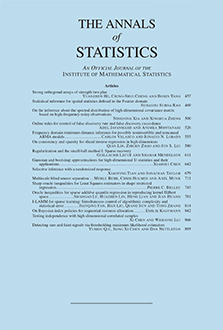Abstract
Estimation of heterogeneous causal effects—that is, how effects of policies and treatments vary across subjects—is a fundamental task in causal inference. Many methods for estimating conditional average treatment effects (CATEs) have been proposed in recent years, but questions surrounding optimality have remained largely unanswered. In particular, a minimax theory of optimality has yet to be developed, with the minimax rate of convergence and construction of rate-optimal estimators remaining open problems. In this paper, we derive the minimax rate for CATE estimation, in a Hölder-smooth nonparametric model, and present a new local polynomial estimator, giving high-level conditions under which it is minimax optimal. Our minimax lower bound is derived via a localized version of the method of fuzzy hypotheses, combining lower bound constructions for nonparametric regression and functional estimation. Our proposed estimator can be viewed as a local polynomial R-Learner, based on a localized modification of higher-order influence function methods. The minimax rate we find exhibits several interesting features, including a nonstandard elbow phenomenon and an unusual interpolation between nonparametric regression and functional estimation rates. The latter quantifies how the CATE, as an estimand, can be viewed as a regression/functional hybrid.
Funding Statement
EK gratefully acknowledges support from NSF Grant DMS-1810979, NSF CAREER Award 2047444 and NIH R01 Grant LM013361-01A1, and SB and LW from NSF Grant DMS-1713003. EK also thanks Matteo Bonvini and Tiger Zeng for very helpful discussions.
Citation
Edward H. Kennedy. Sivaraman Balakrishnan. James M. Robins. Larry Wasserman. "Minimax rates for heterogeneous causal effect estimation." Ann. Statist. 52 (2) 793 - 816, April 2024. https://doi.org/10.1214/24-AOS2369
Information





